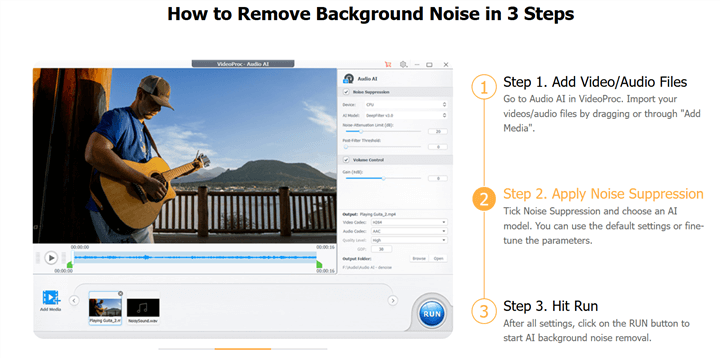Imagine this: you're all set for a cozy evening, ready to immerse yourself in your favorite playlist or catch up on the latest movie. You press play, only to be met with a frustratingly muffled sound that dulls your experience. You might be straining to catch the dialogue or missing the intricate layers of your favorite tracks. Sound familiar? Muffling in speakers is a common yet often overlooked issue that can significantly impact audio quality and enjoyment.
If you've ever been frustrated by a muffled sound from your speakers, you're not alone. Muffled audio can transform clear sounds into something almost unrecognizable, whether you’re listening to music, watching a movie, or hosting a video call. There are several common causes behind this problem, and fortunately, most are fixable with some simple adjustments or repairs.
In this article, we’ll delve into the key reasons why speakers may sound muffled and provide practical solutions to bring your sound quality back to life. We’ll also introduce innovative tools like VideoProc Converter AI that can improve sound clarity through its audio enhancement features. Read on to find out how to enjoy crisp, clear audio once again.

Part 1: Why Speakers Sound Muffled
Common Reasons Why Your Speaker Sounds Muffled
There are several potential reasons behind muffled audio in speakers, which can range from physical obstructions to incorrect settings or worn-out components. Below are the primary causes:
- Blocked Speaker Grills: Dust, debris, or even pet hair can collect on speaker grills, especially over time, and obstruct sound. This blockage reduces the speaker's ability to project sound clearly, creating a muffled effect.
- Audio Settings Issues: Incorrect audio settings can also lead to muffled sounds. An imbalance in bass, treble, or equalizer settings can make certain frequencies overpower others, distorting the sound.
- Damaged or Worn Speaker Components: Over time, speaker parts, especially cones or wiring, can wear out. A torn cone or frayed wires can significantly affect audio clarity, causing muffled or distorted sound output.
- Faulty Audio Source or File Quality: Sometimes, the issue lies in the audio file or source itself. Low-quality files or incompatible audio formats may cause playback issues.
- Poor Room Acoustics: The layout and materials in a room impact sound waves. Hard surfaces and echoes can absorb or reflect sound, creating a distorted or muffled audio experience.

How to Diagnose the Source of the Muffled Sound
Before diving into fixes, it's important to identify the exact cause of your speaker's muffled sound. Here are some steps to help you diagnose the problem:
- Testing with Different Audio Sources and Formats: Try playing audio from different sources, such as another device or streaming platform. Experiment with audio formats like MP3, WAV, or FLAC to determine if the issue is file-specific.
- Using Headphones for Comparison: To isolate whether the issue is with the speaker or the audio source, use headphones and listen to the same audio. If it sounds clear on headphones, the issue likely lies with the speaker.
- Checking Speaker Placement and Surroundings: Placement matters! A speaker placed against a wall or in a corner may cause sound reflections, leading to a muffled effect. Try adjusting its position to see if it improves the sound.

Part 2: Fixing Muffled Sound in Speakers
Once you've identified the potential cause, you can start troubleshooting with the following solutions:
- Clean the Speaker Grills and Ports: Dust and debris accumulate over time, muffling sound. Use a soft brush or compressed air to carefully clean the grills and ports.
- Adjust the Audio Settings: Check the audio settings on your device. Ensure that bass, treble, and balance levels are adjusted properly. For instance, reducing excessive bass can often clarify sound in speakers that tend to produce a muddy effect at lower frequencies.
- Adjust Equalizer Settings: Use your audio device’s equalizer to boost high-frequency levels, which can enrich sound quality. Experimenting with settings to find the perfect balance can lead to significant improvements.
- Optimize Speaker Placement: Sound quality can be dramatically improved with better placement. Avoid placing speakers directly against walls or in tight corners where sound waves can be reflected. Ideally, position them at ear level and keep some distance from walls to reduce muffling.
- Improve Room Acoustics: To reduce echo, consider adding sound-absorbing materials like rugs, curtains, or foam panels. Soft surfaces help absorb excess sound, creating a clearer and more balanced audio experience.
- Check and Replace Speaker Wiring: Damaged or low-quality wiring can cause sound distortion. If the wires appear frayed or degraded, replacing them with high-quality, oxygen-free copper (OFC) cables can enhance signal transfer, resulting in clearer sound.

Part 3. Enhance Audio Quality with AI
In addition to hardware problems, for problems with the audio file itself, such as poor audio quality, we recommend using sound quality improvement tools such as VideoProc Converter AI. This software comes equipped with an Audio AI feature that can significantly improve your audio quality by removing noise, making it clearer and more vibrant.
VideoProc Converter AI utilizes advanced algorithms to upscale audio files, correcting issues that may cause a muffled sound. This tool is particularly useful for those who frequently work with audio files or wish to enhance their listening experience without investing in new hardware.

VideoProc Converter AI – AI Background Noise Remover
- Audio AI for intelligent background noise removal to enhance audio
- Video and audio formats conversion supported
- Supports processing multiple video/audio formats
- Advanced GPU acceleration for quick processing
- Simple to use for both novice and expert users
- Video downloading from more than 1,000+ websites
![]() Excellent
Excellent ![]()

Conclusion
Whether it’s due to dust, audio settings, or room acoustics, muffled sound from speakers is a common problem that can often be fixed with a few simple adjustments. For more advanced audio quality improvements, tools like VideoProc Converter AI can make a significant difference by enhancing audio clarity through AI-powered features. With a few adjustments, you can enjoy high-quality, clear sound once again.









